First off, don't be frustrated. YOU CAN DO IT!
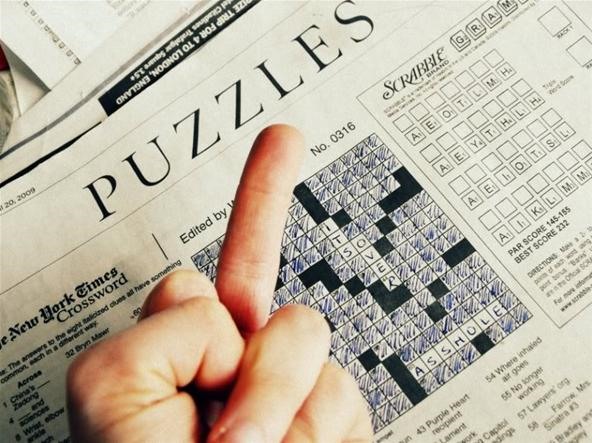
Contrary to the message in the image above, it's NOT over. It's just beginning. And when it comes to solving the New York Times crossword puzzle, the old cliche does apply: practice makes perfect.
I've read quite a few books and articles on solving crosswords. Many of them have useful information, some of it obvious, some of it not. This article is my own guide to what I personally find most useful. Writing this has helped me digest the information I've gathered and memorize those few remaining odd words or facts that turn up again and again. I'm a beginner to intermediate solver, master of Monday-Wednesday, working on my Thursday-Sunday game.
Warning
This guide is for beginner solvers; advanced solvers will not find it useful.
Intro: What Makes an Expert Solver?
What does it mean to be a master cruciverbalist? I have often pondered the many factors: logic, pattern, repetition, areas of expertise, vocabulary, facts, worldliness, educational background, spelling, reading retention, memory, age, I.Q.
With a B.F.A. in textile design, I generally catch the art history clues, the repeated use of the answer ELL (a former measure of length used mainly for textiles), and a decent number of the literature, film & pop culture references. As a kid, I loved reading, excelled in spelling bees and enjoyed diagramming sentences. I have often wished that I had more world history under my belt, any inkling at all of American sports trivia, a better understanding of philosophy, and whatever else might potentially boost my solving abilities.
Is a deeper educational background essential to becoming an advanced solver? Is solving strength predominately a matter of one's individual breadth of knowledge? For the amateur, at least, I'm not sure a ready database of facts is all that matters. Sure, it helps if you are a living encyclopedia, heavily laden with a wide range of trivia. If you fit that description, you might be a promising contender for NYT Crossword Editor Will Shortz' American Crossword Puzzle Tournament. On the other hand, if you're like me, you probably have a few areas of expertise, a decent foundation in a variety of subjects, and above all, a love for words and logic.
I felt a glimmer of hope watching the crossword documentary, Wordplay, particularly when the young five-time-winner of the American Crossword Puzzle Tournament, Tyler Hinman, stated:
"I guess it's kind of a gift, but it's one I've worked for. I got good predominately because I practiced. I cared about it, and I had the drive."
However, the film also interviews former NYT Public Editor, Daniel Okrent, who has insight into which minds make the greatest solvers. Okrent found that musicians and mathematicians tend to be the most adept. Okrent explains what makes these professions most befitting:
"Their ability to assimilate a lot of coded information instantly. In other words, a piano player like John Delfin, the greatest crossword player of our time, he sits down and he sees three staffs of music and he can instantly play it. He's taken all those notes and absorbs what they mean, instantaneously. If you have that kind of mind, and you add it to it a wide range of information, and you can spell, you'd be a really great crossword puzzler."
Unfortunately, I'm neither mathematician nor musician. I most likely will not procure additional degrees in philosophy, history or science just to advance to a Saturday speedy solving status (contrary to popular belief, Saturday is the most difficult day, not Sunday). Outside of going back to school, there are less time consuming, not to mention more practical, methods that can help.
Recently, a 80-year-old master solver offered me some great advice. Seemingly obvious, she recommended simply keeping up on your daily editorial reading. Whether it be sites such as The Daily Beast or Huffington Post, your local paper or the wider reaching New York Times, or magazines like Newsweek, The New Yorker or even People, those daily news bytes will inevitably add to your solving memory bank. Simply glancing at the Times sports section everyday could even boost my most glaring deficiency (I have yet to try it).
Another method is to brush up in a Cliff Notes fashion with books like The New York Times Guide to Essential Knowledge or An Incomplete Education: 3,684 Things You Should Have Learned but Probably Didn't. These books are certainly a brief shortcut to increasing your knowledge bank, they may serve as a refresher of your high school or college foundations that you may have long since forgotten. You might also try podcasts such as Merriam-Webster's Word of the Day, Just Vocabulary, Podictionary, and NPR: Sunday Puzzle Podcast with none other than Will Shortz.
Based on personal experience, I have faith in Tyler Hinman's statement. Crosswords take practice, work, dedication. The only advice I can offer is as followed: check up on your daily news sources of choice, dedicate some recreational browsing time to a variety of reference books, and read the guide laid out for you below. Keep your mind open and flexible. Enjoy learning. Store the interesting facts you learn each day. Don't toss them out, absorb them. Above all, keep at it. All of these things will help you advance in terms of both logic and memorization.
Step 1: Use Grammatical Indicators
There are several recognizable grammatical signifiers that will help you piece together your answers. This section goes over abbreviations, comparatives and superlatives, plurals, slang, tenses, suffixes and prefixes, and word patterns. These tips are very simple, but important for a beginner solver to recognize and keep in mind.
Abbreviations
If the clue indicates an abbreviation, the answer will also be abbreviated. There are a few ways a clue prompts an abbreviated answer. Either the clue will literally state "abbr.", it will offer up a play on words (such as example below, "letters"), or the clue itself will be abbreviated.
Here are examples of abbreviated answers:
Clue, Memo-heading abbr. Answer, ATTN.
Clue, Telepathic letters. Answer, ESP.
Clue, Most of N.J.'s coast. Answer, ATL.
Clue, M.D. and Ph.D. Answer, DEGS
Comparatives and Superlatives
Comparatives express a highER or lowER quality. In contrast, superlatives express the highEST or lowEST quality. When your clue expresses a comparative, your answer will most likely end in "er". When your clue expresses a superlative, your answer will most likely end in "est".
Here are examples of comparative and superlative clues and answers:
Clue, More diminutive. Answer, Tinier.
Clue, Most adroit. Answer, Deftest.
Clue, More benevolent. Answer, Kinder.
Clue, Readiest for picking. Answer, Ripest.
Plurals
When your clue is plural, the answer will always be plural. It is often safe to fill in the last letter with an "s". However, be aware that plural words don't always end in "s".
Here are examples of plural clues and answers:
Clue, Loving touches. Answer, Caresses.
Clue, Desert flora. Answer, Cacti.
Clue, WWW addresses. Answer, URLS.
Clue, Bursting stars. Answer, Novae. (This one is tricky because "Novas" is also correct)
Slang
Be aware of slang words. If the clue has a slang word or informal quality to it, your answer will also be informal. Another common prompt for a slang answer is the specific use of the phrases "informally" or "briefly" or "for short".
Here are examples of slang clues and answers:
Clue, Green stuff. Answer, MOOLA.
Clue, Shot, for short. Answer, AMMO.
Clue, "Jurassic Park" giant, informally. Answer, TREX.
Clue, Chest muscles, briefly. Answer, PECS.
Tenses
The tense of your clue and tense of your answer will always match. This does not mean add an "ed" to the end of every past tense clue. There are all sorts of word endings (or a completely new construction of the word) that express tenses: smell, smelt, smelled; swear, swore, sworn, etc.
Here are examples expressing different tenses:
Clue, Warms up again. Answer, REHEATS.
Clue, Victimized. Answer, PREYEDON.
Clue, Idled. Answer, SAT.
Clue, Said "O-D-O-U-R", e.g. Answer, SPELT.
Prefixes and Suffixes
Often the clue asks for a prefix or suffix. Most of the time it prompts you with the actual word "prefix" or "suffix". Sometimes the prompt is a bit sneakier, such as the use of "follower" below.
Here are examples of suffixes and prefixes:
Clue, Methyl or ethyl follower. Answer, ENE.
Clue, Three: Prefix. Answer, TRI.
Clue, Suffix with green or bean. Answer, ERY.
Clue, Modern: Prefix. Answer, NEO.
Word Patterns
It is helpful if your mind can "fill in the blanks" based on structural and phonetic word patterning. This skill is especially helpful when trying to complete the quotations in Will Shortz' Sunday Acrostic puzzle (not your traditional Sunday puzzle). In your typical everyday puzzles, word patterns are something you should be aware of. An obvious example would be filling in a Q and assuming a U may follow. This may be correct most of the time, but isn't always a sure bet (e.g., QTIP).
Tips
Look out for more specific (but common nonetheless) word endings, such as ING, TIVE, IES, NCE, SION, TION, OUGH, OULD, etc.
Consider the pairing and flow of consonants and vowels. Usually a vowel will follow a consonant and vice versa. For example, if you have KP filled out, it is more than likely incorrect (although it may work in the case of abbreviations, acronyms, initials, etc.) Of course, there are instances when consonants are paired with consonants (common examples: TH, SH, CH, SM, ST, SK, SP, BR, PR, TR, NT, RT, ND, etc.). In the English language it is less common for vowels to be paired together than consonants, but of course it does occur (common examples: AI, EA, OU, IE, OO, UE, etc.)
Step 2: Break Down the Clue's Structure
Clues are structured in a number of different ways. There are very straightforward clues with no tricky indicators (e.g. Clue, Indoor arena feature. Answer, DOME ). There are straightforward "fill in the blank" prompts (e.g. Clue, ____ Ness monster. Answer, LOCH). Those don't require much explanation. Being familiar with the slightly less obvious devices constructors used may help you, though. This section goes over the use of parentheses and "with", connector words, question marks, examples, foreign language, analogies, and spelling of phonetic sounds.
Parentheses and the Use of "With"
Parentheses either indicate additional information to the clue or indicate that the word within the parentheses when combined with the answer completes a phrase. The use of "with" within a clue also indicates the completion of a phrase.
Here are examples using the word "with":
Clue, Pay (up). Answer, PONY.
Clue, Bungle with "up". Answer, MESS.
Clue, Depletes with "up". Answer, USES.
Clue, Apportioned, with "out". Answer, DOLED.
Here are examples using parentheses:
Clue, Tempura ____ (Japanese dish). Answer, UDON.
Clue, Out of ____ (away). Answer, TOWN.
Clue, "____ a Blue World" (1940 hit). Answer, ITS.
Clue, ____ pro nobis (pray for us): Lat. Answer: ORA.
Connector Words
Sometimes a dash and/or the use of the words "connection" or "connector" is used to communicate a word or grouping of words within a phrase. However, this happens on a rare occasion- I could only find one example:
Clue, Give-hand connection. Answer, MEA.
If any of you have more examples, message me on WonderHowTo.
Question Marks
The use of a question mark nearly always indicates a pun, or the unexpected. If it does not indicate a pun, it is used as part of a phrase that requires a question mark.
Here are examples of puns, or the unexpected:
Clue, Noted actor's sons? Answer, ALANLADDSLADS.
Clue, "The Hunt for Red October" and others? Answer, SUBSTORIES.
Clue, Line of clothing? Answer, CREASE.
Clue, Official flower of Phoenix? Answer, AROSEFROMTHEASHES.
Here are examples of phrases that require a question mark:
Clue, Doesn't this strike you _____? Answer, ASODD.
Clue, Reply to "Shall we?" Answer, LETS.
Clue, "How's tricks?" Answer, WHATSNEW.
Clue, "What's ____ you?" Answer, ITTO.
Examples
Often the answer to the clue is an "example" of the clue. This is either cued through the use of "e.g.", the use of the word "or", or the use of the expression "for one".
Here are examples of "examples":
Clue, Slurping at the dinner table, e.g. Answer, NONO
Clue, Neil Armstrong or John Glenn. Answer, OHIOAN.
Clue, Palmist, e.g. Answer, SEER.
Clue, M-1, for one. Answer, RIFLE.
Foreign Language
If the clue is in a different language, the answer will be as well. If the clue makes reference to a foreign culture, the answer will most likely be in the correlating foreign language.
Here are examples of foreign language clues and answers:
Clue, Friend in a sombrero. Answer, AMIGO.
Clue, Summer in La Havre. Answer, ETE.
Clue, Here, in Paris. Answer, ICI.
Clue, French topper. Answer, BERET.
Analogies
Often analogies are used as clues. They are usually expressed with the use of colons.
Here are examples of analogies:
Clue, U.S.C.: Pac 10 :: Duke :_____. Answer, ACC.
Clue, Hocks : horses :: _____ : humans. Answer, ANKLES.
Spelling of Phonetic Sounds
Here's a tricky clue that the beginner solver may not pick up on. The answer may be a phonetically spelled out word or sound. Usually there is no indicator within the clue, so be open to this concept.
Examples of phonetic answers:
Clue, Average student. Answer, CEE.
Clue, Hook shape. Answer, ESS.
Step 3: Work Out Crossword Themes
Checking your crossword for a title is a good first step in determining a crossword's theme. However, not all puzzles are titled. There are several different ways a theme is expressed in a puzzle. The more challenging the puzzle, the more challenging the theme. In Thursday through Sunday puzzles, the themes could include practically anything. Will Shortz is famous for revolutionizing the level of difficulty and cleverness of these themes. One of the most clever themes to hit the Times was constructed by Jeremiah Farrell, edited by Shortz. Check out Barely Bad's detailed explanation of this November 5, 1996 ground shaking conundrum.
There are endless ways a theme is presented. I've seen hidden diagonal words within the puzzle, word search style. One puzzle used the man or woman symbol at the end of several clues to indicate the sex of the people (e.g. Clue, Edna O'Brien or Sinead O'Connor. Answer, IRISH?).
Many puzzles will include entire words within one box, with no prompt to indicate this. The solver must determine that a word, instead of a single letter, is needed due to there not being enough boxes for the correct answers. In other cases, certain letters or groups of letters will be circled, and the combination of these groups determine a theme. Look for quips, quotations, repeated words, and repeated phrases.
Here are examples of some of the easier themes:
Clue, "Merry Christmas" to the French. Answer, JOYEUXNOEL.
Clue, "Merry Christmas" to Danes. Answer, GLAEDELIGJUL.
Clue, "Merry Christmas" to Spaniards. Answer, FELIZNAVIDAD.
Clue, "Merry Christmas" to Italians. Answer, BUONNATALE.
The instance above is very straightforward. The theme is clearly apparent through the clues themselves. However, sometimes the theme is pun based and the answers become a bit trickier, such as in this example below:
Clue, Scary sound from the ocean? Answer, HUMPBACKWAIL.
Clue, Scary sound from a war zone? Answer, BATTLECREAK.
Clue, Scary sound from a cornfield? Answer, FARMGROAN.
Clue, Scary sound from a steeple? Answer, BELLANDHOWL.
Clue, Misspells, say, as a ghost might at 20-, 28-, 37- and 50- Across? Answer, MAKESABOOBOO.
Step 4: Erase Your Answers
Always be willing to readily erase answers! I can't stress this enough. Sometimes the most obvious is unclear if you have just one errant letter written down. I am always erasing, or "clearing the playing field", to keep my mind flexible. In How To Conquer The New York Times Crossword Puzzle, Amy Reynaldo says,
"Many crossword clues can lead to more than one answer, and solvers can easily choose an incorrect one. If something seems right but you can't get anything else to fit around it in that section of the grid, consider erasing it and working from the crossing entries instead."
Example:
I fill in AURA for the clue "atmosphere".
When I go to fill in the Across clue, I have S_U_S. The clue is "pumps and clogs". Because the other answer to "atmosphere" is incorrect, I approach "pumps and clogs" with a handicap. I'm really stumped... could it be something about drainage?
I take a step back and erase AURA. Aha, what about MOOD?
Now I have S_O_S.
Duh! SHOES.
Step 5: Take a Break
If you want to improve your game, avoid looking up the answer. Instead, take a break. Looking up answers won't help you. It's a bad habit. Instead, come back to the puzzle later. In the words of Will Shortz:
"If you get stuck on a puzzle, a time-honored technique is to put it aside and return later. Perhaps the brain works subconsciously on problems in the interim. Whatever the case, a fresh look at a tough puzzle almost always brings new answers."
I can't tell you how many times I put my puzzle down before bed, went to sleep, woke up the next morning and suddenly saw several answers clearly. Who knows why? Maybe the answers are buried in your brain, and you need to clear your mind in order for them to surface.
Barely Bad philosophizes about this in his guide to playing well:
"As I see it -- and I'm just philosophizing here because I have no research to back me up -- what happens is that after a while of concentrating on a particular subject, your brain will continue to work on it even after you think you've forgotten about it. It's as though a subroutine in your brain gets launched after you thought you'd quit the program. Acting below the conscious level but still trying to be helpful, this subroutine silently rummages around in your neurons till it finds what it's looking for and then waits patiently, sometimes for months, to register it next time you need it."
So before turning to your references, try resting those neurons for a bit.
Step 6: Think Outside the Box
Will Shortz says, "Mental flexibility is a great asset in solving crosswords. Let your mind wander." When solving crosswords, your mind must be open to thinking about words outside of their most common usage (a very basic example: Act, not just the verb to act, but also a part of a play).
You must be open to puns and themes.
You must be open to thinking beyond the obvious answers, such as the phonetic spelling of sounds or the tricky connector words, both mentioned above.
Here's an example in Shortz' Sunday Acrostic puzzle that seems rather obvious now, but really stumped me at the time:
Clue, Did a 1960's dance; grotesque. Answer, TWISTED.
I found this particular clue to be clever. The semicolon indicates that the two clues are separate, different topics but will result in the same answer. This requires you to flex your brain to come up with an answer that will fit both clues.
Here is another example that requires you to think outside the box:
Clue, Start of spring. Answer, MAR.
You must consider "start of" as the beginning of a word for spring, rather than the start of the actual season.
Step 7: Outside Solving Help
Will Weng, the second editor of the NYT Crossword Puzzle, is famously quoted for saying "It's your puzzle. Solve it any way you want." I agree. If you are fine with using references, by all means, use them. Personally, I think using a crossword dictionary or website like One Across takes the fun out of it. However, when I'm trying to improve my game and move up in the week to the more challenging puzzles, sometimes I use references.
My favorite reference, however, is doing a crossword with a friend. Using a friend always leaves me feeling guilt free and I find it to be the most enjoyable method of solving. I nerded out and bought the NYT Crosswords for Two book this past Thanksgiving. The puzzles are enlarged for easier sharing. I spent the week solving with my grandma, my sister, my college friend, basically whoever was willing. If you are looking for resources beyond a friendly crossword partner, here's a list of my favorites:
- Amy Reynaldo's How To Conquer The New York Times Crossword Puzzle
- Michelle Arnot's Four-Letter Words: And Other Secrets of a Crossword Insider
- Barely Bad's extremely comprehensive guide to playing well, rules, etc.; check out his list of references in particular
- Crosswordese Word of the Day
- As mentioned above, One Across
- Ray Hamel's amazing list of solving tools
- X Word Info: very comprehensive list of commonly used words of all lengths, Clue and Answer Finder
- Handy word matcher at Quinapalus (They even have a word matcher you can download to your cell phone!)
- More crossword help at Find the word
- And of course, off line, there are several helpful crossword dictionaries
Step 8: Memorize Commonly Used Words
I've saved the most tedious step for last. One way to advance your solving skills is to become familiar with the words that turn up again and again. Below is a selection of the most commonly used words in the NYT Crossword Puzzle. There are similar cheat sheets available in several different reference books and websites. I have been compiling my own list over time, and is subjective (based on my own strengths and weaknesses, e.g. what patterns I may or may not have picked up on). Many of the lists out there are organized differently; this is my preferred method of organization.
Most of the commonly used words don't require much definition. However, take a gander. Some of them are lesser known, and the more commonly known words sometimes offer up dual meanings. Being cognizant of dual meanings may help when the obvious is right in front of you, but you just can't see it. You will begin to recognize a repetition of particular people, places, acronyms, foreign words, foreign currencies, Shakespeare, Greek mythology, the opera, biblical names, literary characters, sports trivia, suffixes and prefixes, etc. In foreign language, for example, it would be wise to brush up on your basic French. NYT crossword creators and editors seem to have a bias toward the French language. Latin does show up fairly often as well, while Spanish rarely shows up on a regular basis, except for the ongoing use of "¡OLE!"
You will notice that most of these words consist of 3-5 letters, predominately four. When constructing a crossword, it is essential to use a plethora of 3-5 letter words, due to the limitations of the grid. According to crossword constructor Michelle Arnot, in her book Four-Letter Words: And Other Secrets of a Crossword Insider,
"Rather than verbs, nouns, and their modifiers, communication inside crosswords requires MEGA (puzzle clue: 'Large: pref.") doses of four-letter combinations. Without these little terms, the game could not exist... They are the bane of the puzzle constructors' profession because they are unoriginal and have turned into cliches...To the puzzle solver, however, they are good news. They serve as stepping-stones into the grid and appear so frequently as to be labeled 'repeaters' by people in the biz."
There you have it. Go ahead and use these repeaters as your stepping stones. If you want to advance in the game, load up on these definitions and facts. Some consider it cheating, I consider it essential game play.
Commonly Used 3-5 Letter Words
ABET: aid or encourage the act of a crime
ALAI: of referring to Jai Alai, a game like pelota played with large, curved wicker baskets
ALE: type of beer; usually used in reference to Great Britain; a pub order
ALEE: on the side of a ship that is sheltered from the wind
ALIT: touched down; landed on
ALOE: a succulent plant; used as a natural burn skin soother; a lotion additive, aloe vera
AMAH: Asian governess or maid
ANON: soon; shortly
ANTE: a stake put up by a player in poker and similar games before receiving cards
ANTI: against; opposed to; opposite to "pro"
APHID: a minute bug that feeds by sucking sap from plants
APSE: a recess, or large decorative indentation, in a church
ARC: a curved shape, curving trajectory, continuing storyline
AREA: neighborhood; region; square footage; subject or range of interest; geometry calculation
ARENA: an area of action surrounded by seats of spectators; most commonly used to refer to a Sports arena
ARID: dry climate; little or no rain
ASEA: out at sea; on the briny; out of port
ASH: most clues are referring to a type of wood used in making baseball bats; fire residue
ASP: a nasty viper; snake
ASS: foolish or stupid person; donkey
ATARI: pioneer in arcade games, home video games, home computer games
ATOM: the basic unit of a chemical element
ATONE: to make amends
ATRIA: upper cavities of the heart
AULD: Auld Lang Syne, Scottish poem; traditional New Year's song
AURA: particular atmosphere or surrounding quality
AVER: insist, state or assert strongly
AXE: tool for chopping wood
BETA: as in "Phi, Beta, Kappa"; second letter of the Greek alphabet; fraternity
BONER: a stupid mistake
DEN: a wild animal's lair; a room in a home; a place where people meet secretly; division of Cub Scout pack
DYED: to use a synthetic substance to add to or change the color of
EAR: the human organ used for hearing; OR common clue: a unit of corn
EBB: flow; movement of tide to sea; move away from land, recede
ECHO: sound caused by reflection of sound waves from a surface back to the listener
ECRU: light beige color
EERIE: weird; strange; frightening
EGO: a person's sense of self esteem or self importance; overly high opinion of oneself
ELAN: style, energy and enthusiasm
ELI: Yale student
ELL: former measure of length (six hand widths) used mainly for textiles; typically 45" or a yard
EMCEE: master of ceremonies; a host
EMIR: Middle Eastern high ranking sheik; high title of nobility or office
EMIT: produce, discharge, radiate; make a sound; issue formally
EON: indefinite or very long period of time
EPIC: a long poem; heroic or grand in scale or character
ERA: long or distinct period of history with a particular feature or characteristic
ERASE: rub out or remove
ERR: be mistaken or incorrect; sin or do wrong
ERSE: any Goidelic language, especially Irish; Gaelic
EWE: female sheep
GENIE: a spirit of Arabian folklore, imprisoned in an oil lamp; typically a reference to the story Aladdin
HUE: color or shade
ICE/ICER: frozen water; money; diamonds; variations icer and icing used to refer to cake decorating
IDLE: not active or in use; without purpose
IDOL: image or representation of a god; a person or thing greatly admired
INGOT: a bar of gold, silver, steel, or other metal
ION: atom or molecule with net charge due to the loss or gain of one or more electrons
IOTA: an extremely small amount
IRATE: great anger
IRE: anger
IRON: to smooth out wrinkles; hard metal; tool used to iron material; a golf club
ISLE: a small island or peninsula
LEA: meadow; open grassy area
LEI: Hawaiian garland of flowers
LITE: low calorie
MOLL: gangster's gal; prostitute
NEAP: astronomer's term
NEE: originally called; born
NEON: fluorescent lighting or sign; very bright color; chemical element of atomic number 10
OBOE: slender, woodwind instrument
ODE: lyric poem written in the form of an address to a particular subject
ODOR: distinctive scent
OGEE: concave arc, architectural term
OGLE: stare at in a lecherous manner
OGRE: monster, terrifying person
OLEO: relating to oil, margarine or butter
OMEN: event that predicts food or evil, prophetic
OMIT: leaves out or excludes
OPAL: semitransparent, milky gemstone
OPEL: a foreign car
ORAL: by word of mouth; of relating to the mouth
ORCA: killer whale
ORE: solid material from which metal or valuable mineral can be profitably
OREO: American cookie, chocolate with white cream in the center
RANI: Hindu princess
ROE: fish eggs, caviar
SAKE: Japanese alcohol made from rice
SMUT: dirt or smooth; obscene talk or literature
SPA: place or resort with a spring or commercial beauty and relaxation treatments
SPAM: unwanted mail; junk mail
STENO: a stenographer, one who writes in shorthand or takes dictation
STET: an editor's notation, let it stand, ignore correction or alteration; write an instruction against an alteration
STY: a pigs home; an inflammation on the edge of an eyelid
TINT: a shade or variety of color; color added to white
TOGA: loose, flowing garment worn by the citizens of Rome
TSAR: also spelled czar (be alert to variant spellings); person with great power or authority
UTE: American Indian tribe
People (Fictional Characters and Well Known Figures)
ABBA: Swedish rock group
ABE: Abe Vigoda, American actor
ADAM: Adam West, American actor; Adam Sandler, American actor
AGEE: James Agee, American writer
ALAN: Alan Arkin, American actor; Alan Alda, American actor (M*A*S*H)
ALI: Ali Baba, fictional character in Ali Baba and the Forty Thieves; Muhammad Ali, American boxer; Ali McGraw, American actress
ALEC: Alec Waugh, Evelyn's son, novelist; Alec Baldwin, American actor; Alec Guinness, British actor
ANAIS: Anais Nin, French author
ANNA: character in The King and I; Anna Karenina, fictional Tolstoy character; Anna Kournikova, tennis player
ANNE: Queen of England; wives of Henry VIII
ARA: Ara Parseghian, famous American collegiate football coach
ARES: Greek war god, son of Zeus and Hera
ARI: Ari Onassis, shipping magnate and second husband to Jackie Kennedy
ARLO: Arlo Guthrie, American '60s folk singer
ASTA: Name of dog in The Thin Man, starring William Powell and Myrna Loy
BASIE: Count Basie, American jazz musician
DAHL: Roald Dahl, British author (Charlie and the Chocolate Factory)
EARL: Earl Scruggs, American banjo musician; Earl Hines, American jazz pianist
ECO: Umberto Eco, Italian writer (Foucault's Pendulum)
EDNA: Edna S. Vincent Millay, American poet, first woman to receive the Pulitzer Prize for Poetry
EERO: Eero Saarinen, Finnish architect
ELI: Eli Whitney, inventor of the cotton gin; a Yale student, Eli Wallach, actor (The Good, The Bad, and The Ugly)
ELIA : Elia Kazan, director (On the Waterfront, Splendor in the Grass, A Streetcar Named Desire); essayist Charles Lamb's alias
ELLA: Ella Fitzgerald, jazz singer
ENID: Enid Bagnold, author and playwright; Welsh folklore character Geraint's wife; also an Oklahoma city
ENO: Brian Eno, former member of Roxy music; music producer; known as the father of ambient music
ERIC: Eric Clapton, English musician
EROS: Greek god of love, son of Aphrodite
ERTE: Romain de Tirtoff, known by the pseudonym Erte, Art Deco artist and designer
ESAI: Esai Morales, American actor (NYPD Blue)
ETTA: Etta James, American blues, soul, jazz, R&B singer
GRETA: Greta Garbo, Swedish American actress (Mata Hari, Camille)
IAN: Ian Fleming, English author (James Bond, Chitty Chitty Bang Bang); Ian Thorpe, Australian Olympic swimmer
IGOR: Igor Stravinsky, Russian composer; Young Frankenstein character; also refers to a Russian opera by Borodin, titled Prince Igor
IRA: Ira Gershwin, songwriter; Ira Levin, American author; also an acronym for Individual Retirement Account, a nest egg private retirement fund
ITO: Ito Midori, Japanese Olympic figure skater
LEA: Lea Thompson, American actress
LEE: Harper Lee, American writer (To Kill A Mockingbird); Spike Lee, American film director; Lee Majors, American actor; Lee Grant, American actress; Robert E. Lee, American Civil War Confederate general
LORRE: Peter Lorre, Hungarian Austrian American actor (M, Casablanca, The Maltese Falcon)
MIES: Ludwig Mies van der Rohe, German American architect
NAT: Nat King Cole, American jazz pianist; Nat Adderley, American jazz cornet and trumpet player
NED: Ned Beatty, American actor; Ned Flanders, Simpsons character
NEO: Matrix character portrayed by Keanu Reeves
NESS: Eliot Ness, '20s American Prohibition agent; Eliot Ness, Untouchables character portrayed by Kevin Costner
OMAR: Omar Sharif, Egyptian actor; Omar Epps, American actor; Omar Bradley, military figure
OLAV: patron saint of Norway; Viking king
ONO: Yoko Ono, Japanese artist and musician, widow of John Lennon
OONA: Oona Chaplin, wife of Charlie Chaplin
OTIS: Otis Redding, American soul singer; Otis Campbell, Andy Griffith Show character portrayed by Hal Smith
OTTO: Otto Preminger, film director (The Man With the Golden Arm); the dog in comic strip Beetle Bailey; Otto von Bismarck, Germany's historical political figure
PETER: Peter O'Toole, Irish actor (Lawrence of Arabia)
RAE: Norma Rae, a character portrayed by Sally Field
RENE: Rene Magritte, surreal artist; Rene Russo, American actress
RENO: Janet Reno, first female attorney general of the United States
SHAMU: stage name of whale performing in Sea World's famous killer whale show
TED: Ted Kennedy, senator; Ted Danson, American actor (Cheers); Ted Koppel, American broadcast journalist, Ted of Bill and Ted's Excellent Adventure
TESS: Tess of the D'Urbervilles, Thomas Hardy heroine
URI: Uri Geller, Israeli British psychic
Acronyms
ASAP: As Soon As Possible
ATM: Automated Teller Machine
AWOL: Absent Without Leave
CBS: Columbia Broadcasting System
DNA: Deoxyribonucleic acid
ELO: Electric Light Orchestra
EMT: Emergency Medical Technician
ENE: East North East
EPA: Environmental Protection Agency
ERA: Earned Run Average
ERS: Emergency Rooms
ESE: East South East
ESP: Extrasensory perception
EST: Eastern Standard Time; established; Estonia; estimate
ETA: Estimated Time of Arrival, e.g. LAX posting; also a Greek Vowel
ETAL: Latin, abbreviation for "and others"; et alii or et alia
HMO: Health Maintenance Organization
IRA: Individual Retirement Account, a nest egg private retirement fund; also, songwriter Ira Gershwin; author Ira Levin
MIT : Massachusetts Institute of Technology
MLLE: French, abbreviated Mademoiselle, title for a young lady, "Miss", infers unwed
MME: French, abbreviated Madame, title for a woman, "Mrs.", infers marriage
NNE: North North East
NYSE: New York Stock Exchange
OSHA: Occupational Safety and Health Administration, government worker safety group
PTA: Parent Teacher Organization
RTE: Route
SASE: Self Addressed Stamped Envelope
SNA: Spanish, abbreviated Senora, title for a woman, "Mrs.", infers marriage
SSE: South South East
STAT: Statistic
STE: French, abbreviated Sainte, "street"
TGIF: Thank God It's Friday
TNT: Trinitrotoluene
USSR: Union of Soviet Socialist Republics
Foreign Words
ALA: French, "in a specified style or manner"
AMI: French, "friend"
AVEC: French, "with"
ECOLE: French, "school"
ELLE: French, feminine pronoun, "she"
ETATS: French, as in Les Etats-Unis, "The United States"
ETE: French, "summer"
ETRE: French, verb "to be"
ILE: French, "island"
LES: French, plural article
MIDI: French, "noon"
MLLE: French, abbreviated Mademoiselle, title for a young lady, "Miss", infers unwed
MME: French, abbreviated Madame, title for a woman, "Mrs.", infers marriage
NEE: French, "born"
STE: French, abbreviated Sainte, "street"
TETE: French, "head"
TRES: French, "very"
HERR: German, "mister"
HAUS: German, "house"
MEIN: German, "my"
AMAS: Latin, "You (singular) love"
AMAT: Latin, "He, she or it loves"
AMO: Latin, "I love"
ANNO: Latin, part of A.D.
AVE: Latin, "greeting"
ETAL: Latin, abbreviation for "and others"; et alii or et alia
EST: Latin, "is"
ESSE: Latin, "being"
INRE: Latin, "in the matter of"
RES: Latin, "thing"
CASA: Spanish, "house"
ESTE: Spanish, "east"
OLE: Spanish, "cheer"; also refers to country music theater venue the Grand Ole Opry
ORO: Spanish, "gold"
SNA: Spanish, abbreviated Senora, title for a woman, "Mrs.", infers marriage
Abbreviations
ANAT: anatomy
ECOL: ecology, ecological, etc.
ECON: economy, economic, etc.
SCI: science
TRIG: trigonometry
Foreign Currencies
FRANC: France (former)
EURO: European Union
KRONE: Denmark and Norway
KRONA: Sweden
PESO: Mexico
MARK: Germany (former)
Suffixes & Prefixes
AERO-: of or relating to air or aviation
-ANA: things associated with a person, place or area of interest, e.g. Americana
ANTI-: opposed to, against
-ADE: commonly paired with lemon or lime; a summer drink
ECO-: representing ecology
-EER: denoting a person engaged with a particular activity, e.g. a puppeteer
-ENE: Chemical or hydrocarbon suffix; denoting a habitant, e.g. Nazarene Chemical or hydrocarbon suffix; also a directional abbreviation, East North East
-ESE: Common suffix referring to language, Japanese, Chinese; also a directional abbreviation, East South East
-EST: Superlative suffix; also refers to a ballpark figure
-ESS: denotes female gender, adulteress
-ETTE: denoting small size, imitation or substitute, or feminine gender
NEO-: new or revived
Places
AGRA: Indian city of Taj Mahal
ALPS: Swiss Alps; high mountain or snowcapped one;
ANA: Santa Ana, California; also refers to the Santa Ana winds
ELBA: An island off of Tuscany, Italy; Napoleon's island of exileEIRE: Ireland
ERIE: One of the Great Lakes, Lake Erie in Toledo; a port city in Pennsylvania
ERIN: Ireland, poetically
ESTE: Villa D'Este, hotel in Lake Como, Italy
ESTES: As in Estes Park, Colorado
NAPA: California wine country
OSLO: Norwegian capital city
PASO: As in El Paso, Texas
RENO: Nevada city
STLO: Saint Lo, WWII Normandy invasion town
TERRE: As in Terre Haute, Indiana
UTAH: American state
Sayings & Expressions
ADO: As in "Much Ado About Nothing", hubbub, to make a do of something
AHA: As in Aha!, an exclamation to express satisfaction, triumph, or surprise
ALA: As in pie ala mode; in a specified style or manner; also a shortening for the state of Alabama
ALAS: An exclamation to express grief, pity, or concern
AMEN: prayer's end; meaning "so be it"
ASIF: As in "yeah right!" or "you wish!"
EGAD: An exclamation to express surprise, anger or affirmation
IDO: An expression referring to wedding vows or a bachelor's last words
ISEE: An expression communicating understanding, "Gotcha", I get it
Opera
ALTO: singing voice below the highest range and above tenor; lowest female adult range
ARIA: long, accompanied song for a solo voice for the opera
OPERA: Opera itself is a common answer to clues; a dramatic work set to music for singers and instrumentalists
TENOR: singing voice between baritone and alto or countertenor; the highest of the adult male range
IGOR: Russian opera by Borodin, titled Prince Igor, also refers to composer Stravinsky
Biblical
ADAM: first man created by God
EDEN: paradise described in the book of Genesis
ENOS: son of Seth, grandson of Adam
EVE: first woman created by God
ESAU: brother of Jacob; son of Isaac
ABEL: murdered by brother Cain; son of Adam and Eve
EZRA: Book of Ezra in the Bible, Old Testament and Hebrew Tanakh
Sports
ACE: tennis & golf, a tennis serve; hitting a golf ball in a hole in one shot
LOVE: tennis, score of zero
EPEE: fencing, sword
IRON: golf, golf club; also referred to as the action of smoothing out wrinkles; tool used to smooth out wrinkles; hard metal
LIE: golf, ball position
OAR: rowing, pole with a flat blade
TEE: golf, peg used to hold golf ball
SOURCES
- Arnot, Michelle. Four-Letter Words And Other Secrets of a Crossword Insider. New York: Penguin Group, 2008.
- Creadon, Patrick and O'Malley, Christine. (2006). Wordplay. USA: Grinder Productions.
- Reynaldo, Amy. How to Conquer the New York Times Crossword Puzzle Tips, Tricks and Techniques to Master America's Favorite Puzzle. New York: St. Martin's Griffin, 2007.
Just updated your iPhone? You'll find new emoji, enhanced security, podcast transcripts, Apple Cash virtual numbers, and other useful features. There are even new additions hidden within Safari. Find out what's new and changed on your iPhone with the iOS 17.4 update.



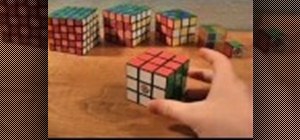

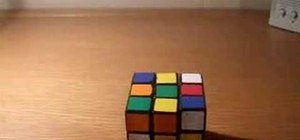
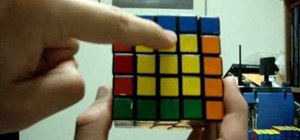
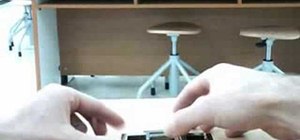
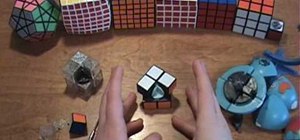
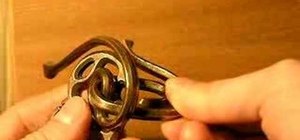

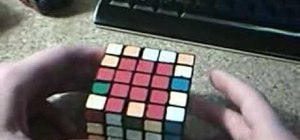
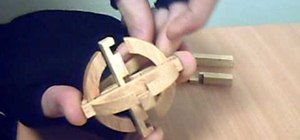
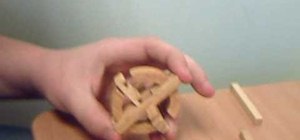
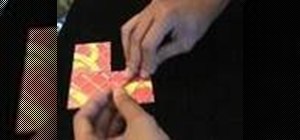
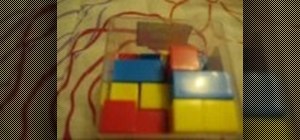

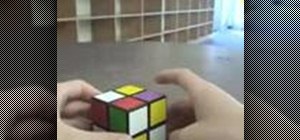
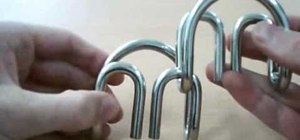
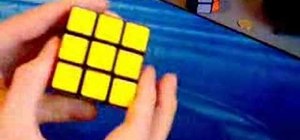
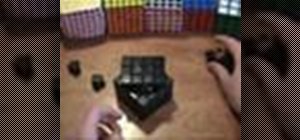
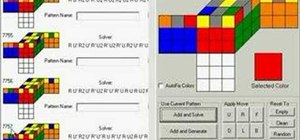
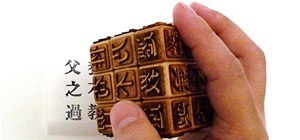
4 Comments
wow.
will shortz, call me daddy.
This is so great! I'm printing this out and keeping it in my crossword puzzle book! Thanks!
So awesome. Can't wait til next Sunday.
Share Your Thoughts